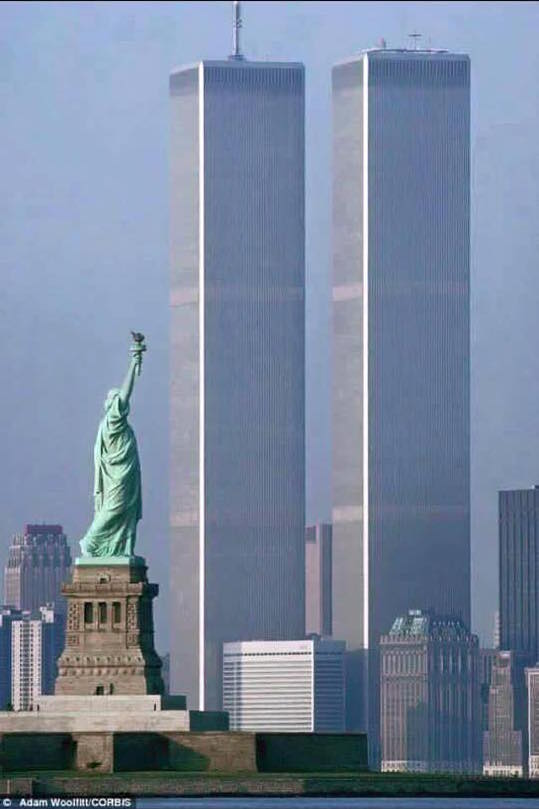Author’s Note: Today is September 11. I never forget. Here’s what I wrote back on this date in 2009, as I recalled the events of that tragic day eight years earlier.
 I grew up in Brooklyn, New York, near Red Hook and the docks. My father and uncles owned a bodega on Columbia Street, and we lived upstairs in a small apartment. From my bedroom window, I could see pigeons lining the rooftops, longshoremen walking to work, and further out, the river and the Manhattan skyline. When I think of the Twin Towers, I think of my childhood, hot summer days looking out the window, car horns and city sounds, the color of the sky at sunset and the glitter of office lights, thousands and thousands of them.
I grew up in Brooklyn, New York, near Red Hook and the docks. My father and uncles owned a bodega on Columbia Street, and we lived upstairs in a small apartment. From my bedroom window, I could see pigeons lining the rooftops, longshoremen walking to work, and further out, the river and the Manhattan skyline. When I think of the Twin Towers, I think of my childhood, hot summer days looking out the window, car horns and city sounds, the color of the sky at sunset and the glitter of office lights, thousands and thousands of them.
Where were you on September 11, 2001 when the planes hit the towers?
I was in a meeting with folks from Manugistics (now part of JDA) getting an update on the company and its transportation management system. A knock on the door and our office manager walked in: “Two planes have crashed into the World Trade Center, other planes might be hijacked, all the airports are closed, and you’re the only ones still here in the office.” The meeting ended in disbelief and confusion. The folks from Manugistics left not knowing how they would get back home to Maryland, and I joined my colleagues next door at the Hilton to watch the events on TV.
That was eight years ago.
I was going to write something else today, but I changed my mind. Remembering 9/11 seems more important to me, even if it doesn’t directly relate to supply chain and logistics.
Then again, the terrorist attacks have had a lasting impact on the industry. Trade security became a priority and various initiatives were launched in the months and years that followed, including Customs-Trade Partnership Against Terrorism (C-TPAT), the Container Security Initiative (CSI), the Advanced Manifest Rule (AMR), Smart and Secure Trade Lanes (SST), and most recently, the Importer Security Filing (aka “10+2”).
Shortly after the attacks, Robert Bonner, U.S. Customs Commissioner at the time, gave a speech where he said: “We must reaffirm the importance of knowing your customer and consider the overall ‘air-tightness’ of your supply chain, from factory floor, to loading dock, to transportation to our border. Every single link in that chain must be made more secure against the terrorist threat.”
Have we succeeded in creating ‘air-tight’ supply chains? I don’t think so. We may have prevented dirty bombs from entering the country, but not lead-tainted toys and food contaminated with melamine (among many other examples). The fact of the matter is that most companies still have a poor understanding of their end-to-end supply chain processes, including shipment flows and the identity of all the parties involved. They also lack process controls and metrics. And despite all the advances in technology, supply chains are still plagued by incomplete, inaccurate, and late information.
Some things never change.
Sometime after the attacks, my father told me how he remembered seeing the towers being built. He had just arrived from Cuba, and having grown up on a farm, seeing those tall buildings rise from the ground was simply amazing. “Never would I have imagined seeing those towers come down,” he told me. Neither could I.
My father passed away last year, and there’s still a hole in the ground where the towers stood and in my heart. Life goes on, as it should, but I sometimes wish I could go back to my childhood window, just one more time, and watch the sun rise, and the pigeons take flight.








